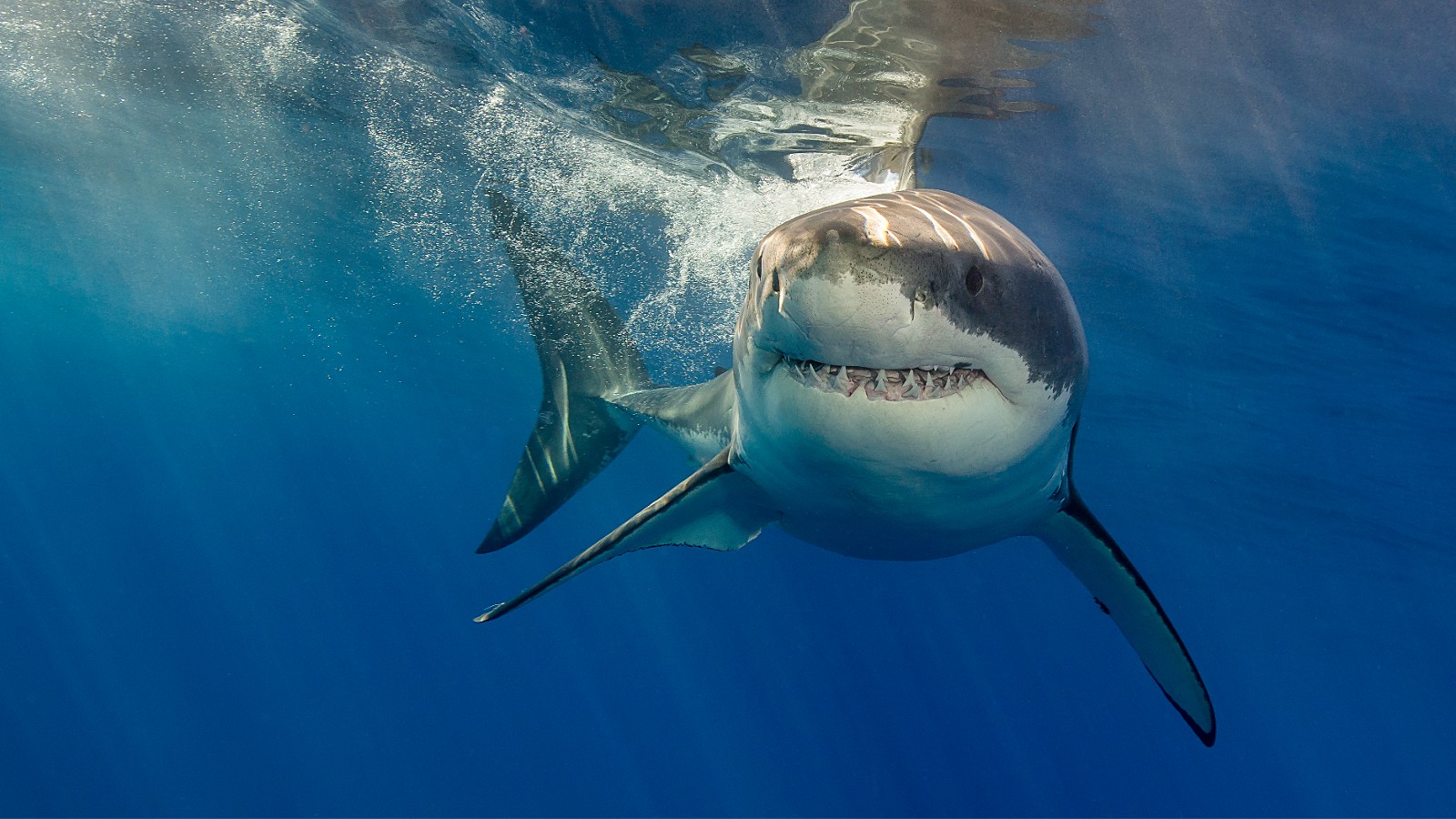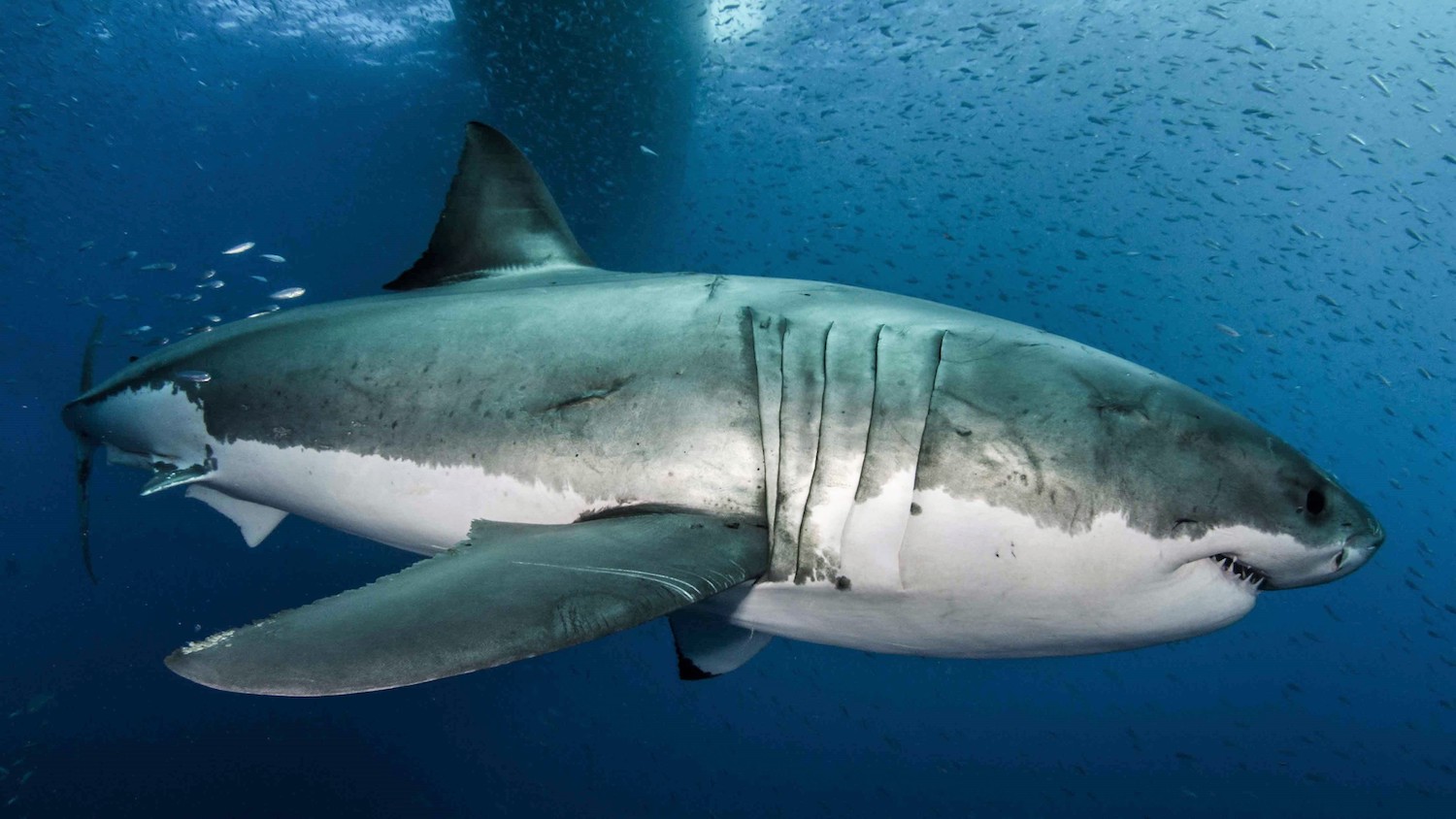Great white sharks have almost no interest in eating humans, study confirms
Juvenile great white sharks are near to people in Southern California nearly every day but rarely bite them.

Humans and juvenile great white sharks swim in the same waters nearly every single day along some beaches in southern California, a new study has found. Yet bites remain rare.
“I think what we've finally done is put a nail in the coffin for the old myth that if you're in the water with a white shark, it's going to attack you,” study co-author Chris Lowe, a marine biologist at California State University, Long Beach, told Live Science. The researchers published their findings on June 2 in the journal PLOS ONE.
Shark attacks are extremely rare. In 2022, there were 41 unprovoked bites and one fatality reported in the U.S., according to the University of Florida’s International Shark Attack File. Yet perceived risk among the public is high, the study authors said. Part of the problem, they said, is there is very little data showing how often sharks and humans come into close proximity.
To find out, the researcher flew a drone over beaches in southern California every month for two years, noting where in the water they spotted people and great white sharks (Carcharodon carcharias).
Most of the juvenile great white sharks they spotted were at two locations: Carpinteria, which is just south of Santa Barbara; and Del Mar, just north of San Diego. Along those beaches, the research team spotted a human-shark interaction on 97% of the days they took the drone out.
The sharks were all located on the far side of the wave break — the line where the waves start to crest — but so were plenty of people. While waders and bodyboarders tended to stay on the beach side of the wave break, swimmers, surfers and paddle boarders were frequently spotted past the wave break — often bringing them close to white sharks.
Yet over the course of the study, there was just one unofficial report of a white shark bite along these beaches, Lowe said. A few months afterward, there was one additional record of a shark bite, he added.
Get the world’s most fascinating discoveries delivered straight to your inbox.
The young white sharks are probably more focused on eating animals like stingrays, which live on the ocean floor, Lowe said. And even though these young sharks can still grow to about 9 feet (2.7 meters) long before they reach adulthood, they might be afraid of humans, he added.
The researchers are still trying to understand why the juvenile white sharks were congregating around Carpinteria and Del Mar. One reason might be an abundance of food, Lowe said. But these young sharks might also hang around the coast because there aren’t that many adult white sharks nearby to threaten them.
Adult white sharks, which can reach up to 20 feet (6 m) long, tend to live closer to the offshore islands and further north where they can find more seals and sea lions, Lowe said, adding that while he’d definitely want to be more careful going into these waters, bites from adult white sharks are still rare.
But with the juveniles off southern California, the findings show that shark encounters are extremely common and not particularly dangerous. It's possible for someone to swim near one of these juvenile white sharks without ever knowing it — Lowe said they’d often spot sharks right next to, or even underneath someone who appeared completely unaware of the giant, predatory fish.
“For years, we've been saying we really don't think sharks are as dangerous to people as people think or as they've been taught to believe,” Lowe said. “And what this research shows, for the first time, is that that’s true.”

Ethan Freedman is a science and nature journalist based in New York City, reporting on climate, ecology, the future and the built environment. He went to Tufts University, where he majored in biology and environmental studies, and has a master's degree in science journalism from New York University.
 Live Science Plus
Live Science Plus






